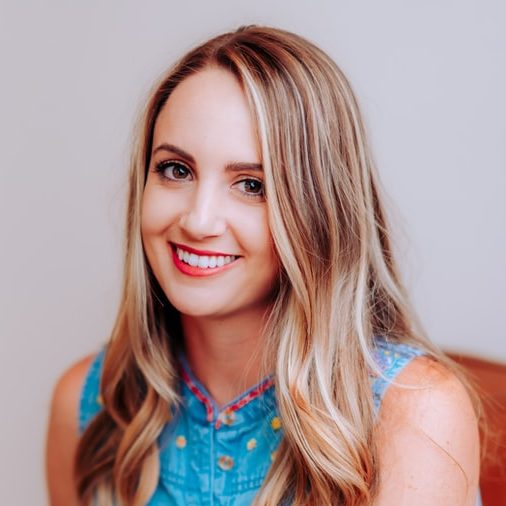This is a Course Landing Page
This is an example of a course landing page, you could edit this to put information about your new course or product launch.
#demo-inline-form { display: grid; grid-gap: 1rem; align-items: center; grid-template-columns: repeat(var(–demo-inline-form-columns, 1), 1fr); } @media only screen and (min-width: 600px) { #demo-inline-form { –demo-inline-form-columns: 3; } }






A Feature Section Headline Can Goes Right Here
This is an example of a features section, you could edit this to put information about your site.

take an in-depth look at your important business questions
Website questions are business questions
And business questions are hard to answer.
- What makes you different … really?
- What kind of people can you truly serve on a deep level?
- Where’s the smartest place to put your business focus in the next quarter? For the rest of this year?
These are the questions we tend to jump over, because they’re uncomfortable. But if you skip right to trying to implement, one of two things will happen:
- You’ll do the wrong thing quickly
- You’ll stall out, because on some level … you know you’re doing the wrong thing quickly
That’s where “Done with You” comes in.
The Flagship isn’t another course that you can put off watching for months (or years).
We sit down together, in a small group, to actually hash out the answers to deep questions.
The Flagship also includes individual critiques from Sonia. With every milestone, you’ll get an experienced pair of eyes to let you know,
“You’ve got this. Click Publish!”
And it includes two private coaching calls — to dig deep and unearth the true potential of your business.
It comes together to form an engine of support and accountability to get this project done — and get you a site you’re proud to share by late February.
Meet the Team
This is an example of a course landing page, you could edit this to put information about your new course or product launch.

Claudia
Designer

Sabrina
Consultant

Ryan
Developer
What People Are Saying…
This is an example of a course landing page, you could edit this to put information about your new course or product launch.
Definitely worth the investment. I cannot wait to show the whole world.
Paula Davis
Strategist
I am so pleased with this product. It’s just amazing. I love Mai Theme!
Drew Ward
Developer
This theme is simply unbelievable! We can’t live without BizBudding.
Sue Miller
Designer
Pricing Headline Goes Here
Add information included with all the product options with a pricing table.
Plan 1
$25/mo
- Add the features.
- Describe what they get.
- Include a bonus.
Plan 2
$25/mo
- Add the features.
- Describe what they get.
- Include a bonus.
Plan 3
$25/mo
- Add the features.
- Describe what they get.
- Include a bonus.
Disclaimers, links to Terms of Use, and Notices.
Frequently Asked Questions
This is an example of a course landing page, you could edit this to put information about your new course or product launch.
Q: How do you get new members?
- Give “early adopters” free/first access. These should be highly interested people, so you know they’ll ask questions and help stimulate conversation. (If they are influencers or known in the industry, even better.) The more conversation going on, the more new people will be likely to join. No one wants to join—or pay for—a community that’s DOA. You can also ask these people to be your “beta testers”—to give you honest feedback about your community. This is hugely beneficial as you are deciding how to structure it, what to include, what to call things, etc.
- Fill the community with high-quality content. And do it before you start promoting/inviting people. (If what you’re after is purely a discussion space, like a shared Slack channel, then this doesn’t apply.) Make sure there is a wealth of resources, so even when you are first getting it going there is something they can draw from for help, ideas, and inspiration.
- Know your target audience. I know, you are probably tired of hearing this. Every marketing expert or guide directed at new business owners says this, but that’s because it’s so important. If you don’t really know your audience, how can you know what content will appeal to them?
- Get referrals. Remember those “early adopters”? Likely you invited them first because you have shared interests. Those people can be a great source of referrals. Leverage your relationship with them to increase new customers/members.
- Spread the word. Talk about your community. A lot. Drop a mention in your emails, on social networks, in blog posts, in one-on-one conversations, really wherever and whenever you naturally can.
Q: How do you encourage people to ask questions (i.e. build an engaged community)?
- Make it a safe space. There should a governing set of rules in place where members are required to treat one another with respect. The whole point is making it a place of learning, open communication, and growth. Hate speech, putting others down, and not respecting the boundaries or privacy of other members should never be tolerated.
- Make it well-organized and clear where people can ask questions. Depending on how you choose to set up your community, there may be designated areas where people can post and ask questions or different areas for discussing specific topics. Label your spaces clearly. If one of your spaces is called “Webinars” that is what people should find there, not podcasts, not tutorial videos on how to use your products. Don’t be afraid to keep refining your layout and what you are calling things, especially in the beginning. You should make your community aware of any big changes with an announcement though so when they notice things have been moved around or look different that they are not feeling lost and in the dark.
- Ask your core members/early adopters to comment & ask questions. These people will pave the way (and hopefully encourage) the rest of your members.
- Reply. Yup, here’s to stating the obvious haha. If someone comments or asks a question, reply and do so within a reasonable timeframe. There’s nothing more discouraging that putting yourself out there and getting no response. If you don’t know the answer to something, be honest and tell them you’ll look into it or point them to a helpful resource (or create one of your own!). Or, direct the question to someone on your team—if you have one—better suited to answer it.
Q: Why would someone pay for a community when there are so many free resources and social media platforms where they can find what they need? Why would YOU choose a paid platform to host your community on?
- Less of what you don’t want, more of what you do. This applies to both why someone would pay to be a member (of course you can always keep your community free) and why you would choose a paid platform over a free one like Facebook. Social media sites have their own agenda and that is keeping people on their platform. That means you have to play by their rules and sacrifice a lot of control. It also means you may not always be able to say what you want; health and wellness bloggers or anyone whose viewpoints step too far outside of the mainstream can especially relate to this. Many FB users have become disillusioned with the platform as well. They are tired of seeing ads, suggestions they are not interested in, and the general noise of it all. Choosing a platform boils down to more of what you and your audience want—real conversation and meaningful connection—and less of what they don’t.
- Brand loyalty/shared values. It can sometimes be hard to find others that share our values and connect with them in real life. The internet is an immense source of good when it comes to bringing people together, and being able to be a part of a community where you can be open and honest takes it one step further.
- Everything in one place, organized. Time is money friend! (Any World of Warcraft fans out there? haha) Seriously though, time is limited, and we’ve all got a lot going on. A community full of content, resources, and discussion, specifically catered to your members eliminates the need to hunt around to find answers.
- There is actual discussion/value/learning. You get what you pay for. In the case of free stuff and blindly searching in the internet, you don’t know what you’re going to get, if it will actually be helpful, or if it’s even accurate or right for you. In a community the content has been curated for its audience. There’s also is a common goal that everyone succeeds.
- People need to want to learn, have some time to devote, and be committed. This comes back to knowing your audience. There are people who are willing to put themselves out there, do anything and everything to learn and improve, and there are those who are not ready or don’t have the time (this is okay but an important distinction). Those who join, engage, and stay in your community know they are going to benefit and grow from what you have to offer, so they don’t mind paying to be a member.
Q: How can you transition from a well-established community in FB to a different community platform?
- Be transparent & let your audience know what to expect. Rebecca talks more about how she did for her That Organic Mom FB group in our podcast, but just be honest and be clear on what people can expect and when. Give a firm date on when you’ll make the switch and how people can join you in the new place. We go a lot deeper into the question of whether or not you can make your FB group into a thriving community in the Mai Blogging Community, so make sure to check that out if you are a member. (Not a member, but want to be? Join now.)
- Reinforce that you value your current members. People often instinctually resist change, so you need to make them comfortable and ease the tension. You don’t want your current community members to feel like you are abandoning them. Be very clear that it’s not goodbye, you’ll just be moving the conversation to a different place. Lay out your reasons for making this transition. It’s likely that a big part of your rationale is that you are doing this to better serve your audience. Make sure they know that! Many people are fed up with Facebook and when you share your reasons for moving, you may be surprised at the positive reactions you receive.
- Plan well in advance. There are a lot of logistics and things to consider when moving your community. A big one is learning your new platform. Familiarize yourself with it in advance and pull over whatever content you need BEFORE actually shutting down your old community. The last thing you want to do is invite people to your new platform and have them enter into a confusing and empty environment.

Are You Ready Yet?
This is an example of a course landing page, you could edit this to put information about your new course or product launch.
#demo-inline-form { display: grid; grid-gap: 1rem; align-items: center; grid-template-columns: repeat(var(–demo-inline-form-columns, 1), 1fr); } @media only screen and (min-width: 600px) { #demo-inline-form { –demo-inline-form-columns: 3; } }


